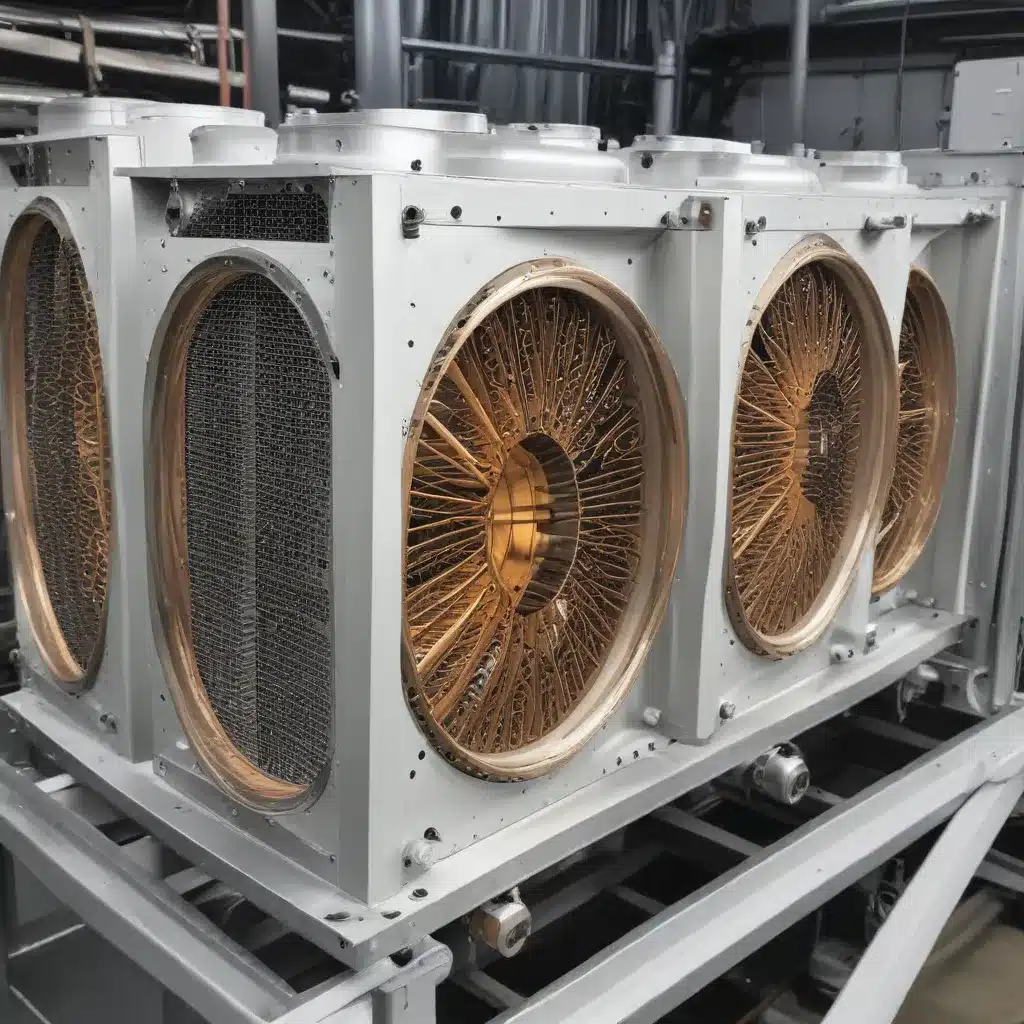
In the ever-evolving landscape of engineering, the role of thermal analysis has become increasingly crucial. As the global push for innovation in electronic devices, sustainable transportation, and cutting-edge technologies continues, the demand for efficient cooling systems has reached new heights. At the forefront of this revolution stands the air-cooled heat exchanger, a versatile and innovative solution that is transforming the way we approach thermal engineering.
Mastering the Fundamentals of Air-Cooled Heat Exchangers
Air-cooled heat exchangers are a class of thermal transfer devices that utilize ambient air as the cooling medium. Unlike their liquid-cooled counterparts, these systems rely on the natural movement of air to dissipate heat from various applications, ranging from HVAC systems and industrial processes to specialized equipment in the automotive and aerospace industries.
The key to understanding the power of air-cooled heat exchangers lies in the underlying principles of heat transfer. Thermal conductivity, the ability of a material to conduct heat, and heat transfer coefficient, the measure of the heat transfer rate per unit area per degree of temperature difference, are two critical factors that govern the efficiency of these systems. By optimizing the design and material selection, engineers can harness the inherent advantages of air-cooled heat exchangers, such as their compact size, low maintenance requirements, and energy-efficient operation.
Pushing the Boundaries of Thermal Design with Computational Tools
Traditionally, the design and optimization of heat exchangers relied on manual, iterative processes, which were often labor-intensive and time-consuming. However, the advent of advanced computational tools has revolutionized the field of thermal engineering. Diabatix’s ColdStream, a groundbreaking software for thermal generative design, has emerged as a game-changer in this domain.
ColdStream allows engineers to streamline the design process by automating many of the steps traditionally associated with thermal analysis. By leveraging the power of computational fluid dynamics (CFD) and advanced algorithms, this software can model, analyze, and predict the thermal behavior of complex systems with unprecedented accuracy. This shift from manual to automated thermal design has not only accelerated the development process but also enabled engineers to explore a wider range of design possibilities, optimizing for factors such as efficiency, weight, and cost.
Enhancing Performance and Longevity with Innovative Cooling Solutions
As the demands on our electronic devices, transportation systems, and industrial equipment continue to grow, the need for advanced cooling solutions has become paramount. Air-cooled heat exchangers have emerged as a versatile and reliable option, offering a range of benefits that are transforming the landscape of thermal engineering.
One such innovation is the RIGID Micro DC Aircon, the world’s smallest portable AC module designed specifically for electric vehicle (EV) battery cooling. By actively circulating cool air around the battery pack, this compact and customizable solution helps maintain optimal temperature conditions, preventing overheating and extending the battery’s lifespan.
The Tesla battery cooling system has also set a benchmark in the industry, showcasing the impact of advanced cooling technologies on EV performance and efficiency. Tesla’s active cooling system, which utilizes a coolant to dissipate heat from the batteries, has been instrumental in ensuring consistent charging speeds, improved range, and enhanced overall battery longevity.
Optimizing Maintenance and Troubleshooting Practices
While air-cooled heat exchangers are renowned for their reliability and low maintenance requirements, proper care and attention are still essential to ensure their long-term performance. Regular inspections, cleaning, and monitoring of critical components can help identify and address potential issues before they escalate.
One common challenge with air-cooled heat exchangers is the accumulation of dirt, debris, and other contaminants on the heat transfer surfaces. This can lead to a reduction in heat transfer efficiency, increased pressure drop, and even potential equipment failure. By implementing a well-defined maintenance schedule and utilizing effective cleaning techniques, such as high-pressure water or compressed air, users can optimize the performance and extend the lifespan of their air-cooled heat exchangers.
Embracing the Future of Sustainable Cooling
As the world grapples with the pressing challenges of climate change and environmental sustainability, the role of air-cooled heat exchanger systems has become increasingly vital. These innovative solutions offer a more energy-efficient alternative to traditional cooling methods, reducing the carbon footprint and contributing to a greener future.
The introduction of the RIGID Micro DC Aircon for electric vehicle battery cooling exemplifies this trend. By actively regulating the temperature of EV batteries, this compact and customizable system helps maximize their performance and longevity, ultimately enhancing the overall efficiency and sustainability of electric mobility.
Unlocking the Full Potential of Air-Cooled Heat Exchanger Systems
As we continue to push the boundaries of what’s possible in thermal engineering, air-cooled heat exchanger systems stand at the forefront of this revolution. By harnessing the power of advanced computational tools, innovative cooling solutions, and optimized maintenance practices, we can unlock the full potential of these versatile and efficient thermal transfer devices.
Whether it’s improving the performance and lifespan of electric vehicle batteries, enhancing the efficiency of industrial processes, or ensuring the reliable operation of critical electronic equipment, air-cooled heat exchangers are poised to play a pivotal role in shaping the future of sustainable and innovative engineering.
At https://www.aircooledheatexchangers.net/, we are dedicated to providing cutting-edge insights, practical tips, and in-depth expertise on the world of air-cooled heat exchanger systems. Join us as we explore the frontiers of thermal engineering and discover how these remarkable technologies are transforming the way we approach thermal management and energy efficiency.

